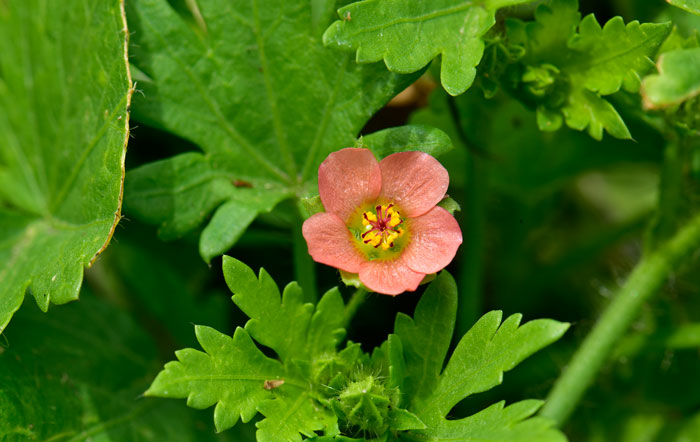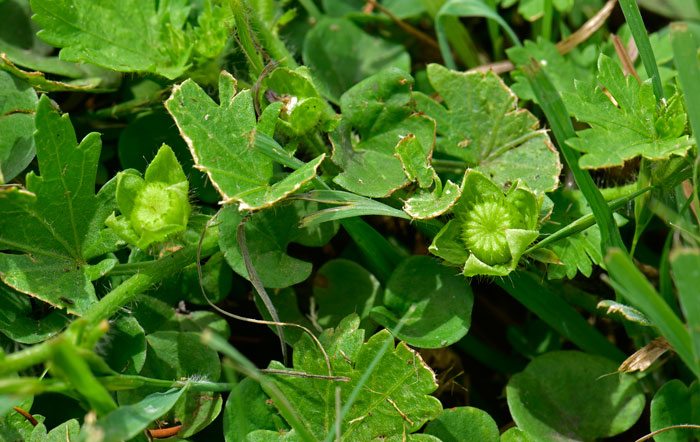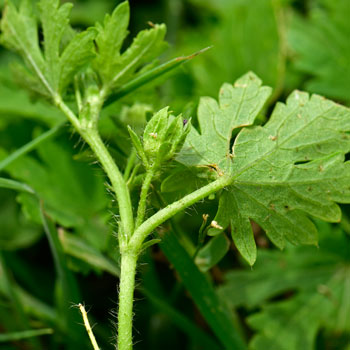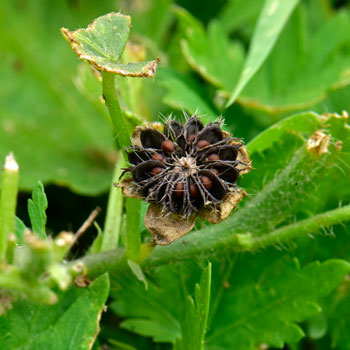Modiola caroliniana, Carolina Bristlemallow





Scientific Name: Modiola caroliniana
Common Name: Carolina Bristlemallow
Also Called: Babosilla, Carolina Modiola, Redflower Mallow
Family: Malvaceae, Globe Mallow Family
Synonyms: (Modiola multifida)
Status: Native, naturalized.
Duration: Annual, biennial or perennial.
Size: Up to 6 inches more or less.
Growth Form: Forb/herb, subshrub; creeping, trailing, stems rooting at nodes, decumbent, pubescence bristly.
Leaves: Green, light green; shape variable, round, triangular or reniform, if lobed with 3 or more lobes, dentate.
Flower Color: Orange, pinkish-orange, red-orange, purple-red; flowers from leaf axils fruit a schizocarp with 14 or more segments (mericarps), each segment with 1 seed.
Flowering Season: March to May in Arizona, February to June in Texas.
Elevation: Below 2,500 feet in Arizona, below 1,500 feet in California.
Habitat Preferences: Lawns, gardens, damp and disturbed places in urban habitats.
Recorded Range: Carolina Bristlemallow is erratically scattered and naturalized throughout much of the United States but mostly in the south; AL, AR, AZ, CA, DE, FL, GA, HI, LA, MA, MS, NC, OK, OR, PA, SC, TN, TX and VA. Likely native to South America.
North America & US County Distribution Map for Modiola caroliniana.
U.S. Weed Information: No information available..
Invasive/Noxious Weed Information: No information available.
Wetland Indicator: In North America Modiola caroliniana has the following wetland designations; Arid West, FAC; Atlantic and Gulf Coastal Plain, FACU; Eastern Mountains and Piedmont, FACU; Great Plains, FAC; Northcentral & Northeast, FACU; Western Mountains, Valleys, and Coast, FACU.
(FAC = Facultative, occur in wetlands and non-wetlands, FACU = Facultative Upland, usually occur in non-wetlands, but may occur in wetlands).
Threatened/Endangered Information: No information available.
Genus Information: 1 species in Modiola in the United States.
The Plant List includes 25 scientific plant names of species rank for the genus Modiola. Of these 1 are accepted species names.
Comments: Modiola is a monotypic genus naturalized throughout the United States and sub-tropical tropical areas.
Carolina Bristlemallow is used as drug for miscellaneous diseases and as a throat aid by the Houma Native American tribe in Louisiana. See ethno-botanical uses at Native American Ethnobotany, University of Michigan, Dearborn.

